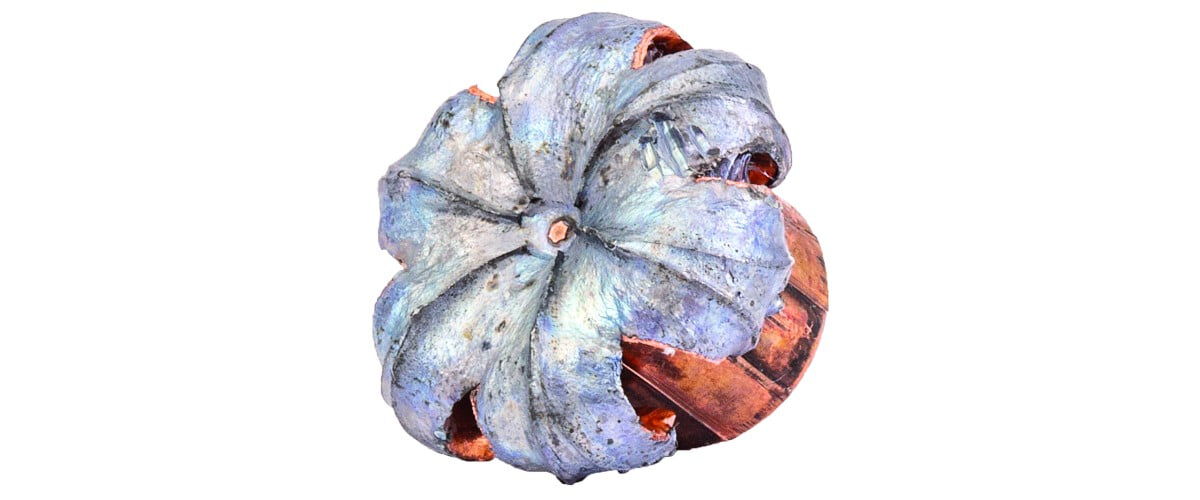
Some hunters and shooters don’t pay close attention to what a bullet does when it leaves the barrel of their gun. They figure that, so long as the bullet hits where it was aimed, it should do the job it was intended for. But serious hunters and shooters know this isn’t always the case. I’ve tracked animals that should have gone down quickly for miles, and I’ve seen the problems bad bullet performance can cause.
That’s why I’m a believer in bonded bullets for most hunting and shooting applications. I say “most” because there are times a bonded bullet makes sense and when it does not, matters we’ll touch on later. But if I’m hunting big game or choosing a self-defense bullet, I prefer bonding.
Bonding Background
So, what exactly is bonding? In short, it’s locking the copper jacket of a bullet to its lead core. There are multiple ways to accomplish this, primarily through heating, electrochemical jacket application, or through high pressure.
As mentioned earlier, bonding serves to lock the jacket and core together, but there are multiple benefits to the design. First, bonded bullets almost always retain more energy after impact, and that leads to greater straight-line penetration. Big, tough animals with heavy bones like elk, moose, bear, and dangerous African game like Cape buffalo all have heavy muscle, thick skin and dense bone. A bullet that fails to penetrate deeply can result in a wounded animal. If you’re after a bear or buffalo, that can lead to tragedy.

Bonded bullets also hold together better, which is a benefit for me as a meat hunter. Nobody wants shards of lead and copper scattered inside the meat, and I’ve had a non-bonded bullet actually come apart and badly damage an antelope tenderloin. I’ve seen front quarters blown up by bullets with separating jackets and cores, and that’s a lot of excellent protein to waste. You owe it to the animal to use as much of the meat as possible, and in many cases a bonded bullet helps you do that.
The other important application for bullet bonding is self-defense. The goal of any self-defense bullet should be to stop an attacker as quickly as possible, and deep-penetrating bonded bullets do that. It’s one reason why bonded bullets like Speer’s Gold Dot do so well in gel test protocols, especially through barriers. The retained weight and straight-line penetration is a benefit, especially when a threat is behind a barrier or is wearing heavy clothing.
Do Bonded Bullets Always Make Sense?
You don’t always need a bonded bullet, and there are some instances when a non-bonded bullet (traditionally called a cup-and-core bullet) are actually more effective. A non-bonded bullet expands very rapidly, which is ideal on small, soft-skinned animals like foxes, coyotes and prairie dogs. With those animals, rapid expansion is ideal, and that’s why so few people choose bonded bullets for them. Deep, straight-line penetration is not important.
Many target and training bullets aren’t bonded and don’t need to be. Precision rifle shooters are more concerned about consistent bullet construction and performance and don’t need deep penetration. This is especially true when shooting steel targets that can be damaged by bonded bullets.
There’s also the issue of cost. Bonding requires an extra step in the manufacturing process, and that takes time and money. If you don’t need the benefits of a bonded bullet for your shooting application, then you don’t need to spend that extra cash.
The Best Bullets
Speer virtually created the bonded handgun bullet market with the release of Gold Dot. During the 1980s law enforcement agencies were paying much closer attention to bullet performance and penetration in an effort to more effectively and efficiently stop armed attackers, and the Gold Dot bullet proved ideal. To create Gold Dot, Speer developed a method to electrochemically add the jacket to the lead core one molecule at a time. In doing so, Speer created a hollow point bullet that was bonded to the lead core, promising expansion coupled with impressive straight-line penetration. Gold Dot was—and is—a great option for defensive bullets.

Speer’s electrochemical jacket bonding method isn’t just applicable to defense bullets. It’s the same method used to created the successful Impact hunting bullet, which features a molecularly fused jacket that, combined with its streamlined, boat tail profile makes these bullets exceptionally accurate without sacrificing weight retention and straight-line penetration.
Go Bonded
Do you need bonded bullets? That depends on your hunting or shooting application, but there are instances where a bonded bullet makes sense. For hunting big game I prefer a bonded bullet, and I don’t just use them on the largest, heaviest animals.
I think bonded bullets are a must for self-defense. You don’t know what you’ll be facing in a life-or-death situation, but your goal is to end the violent encounter as quickly as possible. Science tells us that a bonded bullet does that, and Speer’s Gold Dot has a proven track record of performance.
When you need straight-line penetration, a bonded bullet offers a huge advantage. You’re relying on your bullet to do its intended job correctly, and bonded bullets do just that.